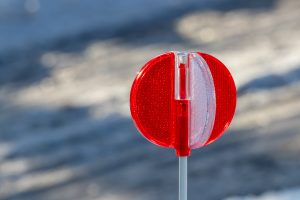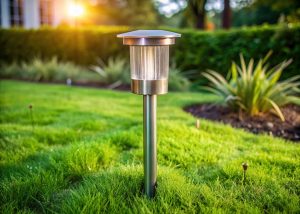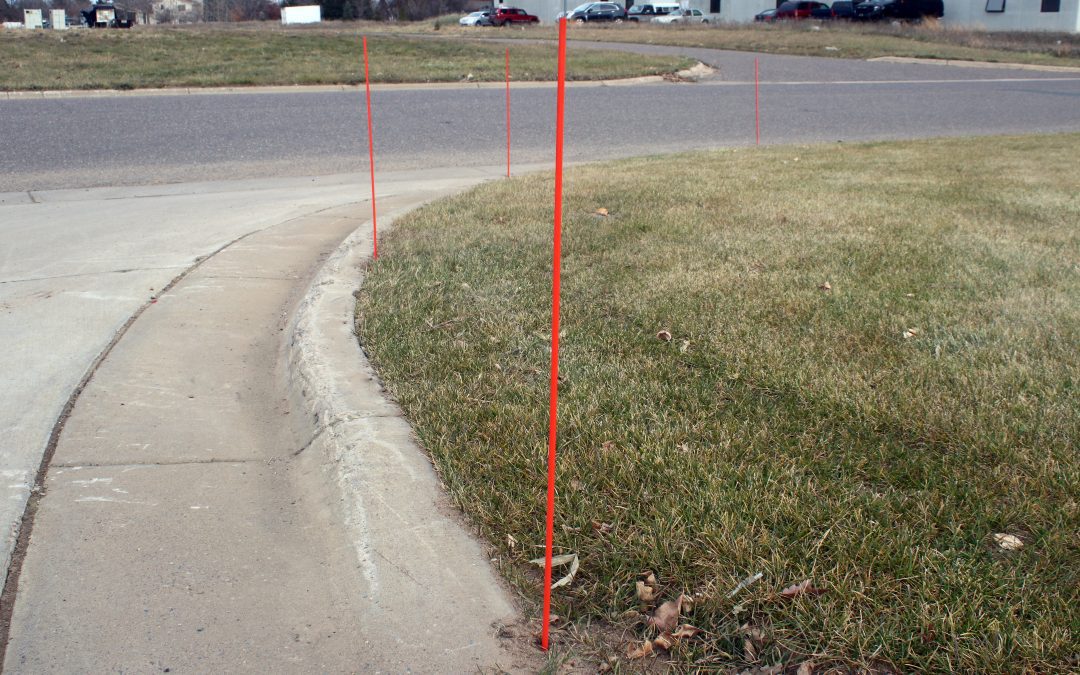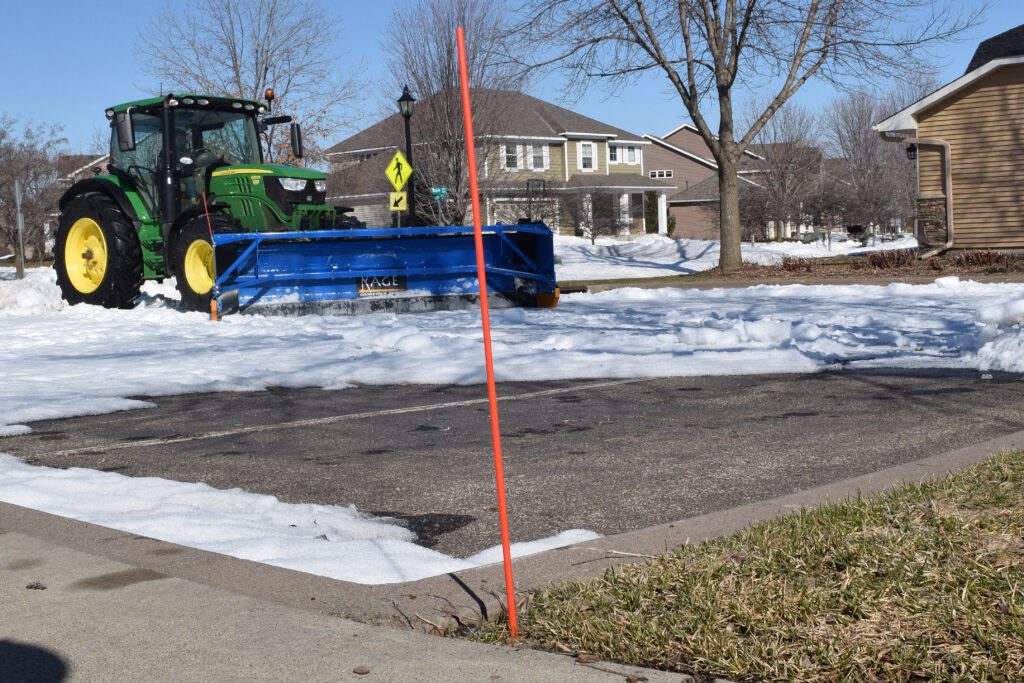If you’ve ever tried to park your car during a snowstorm, or navigated a driveway in the dark, you understand the frustration of not knowing exactly where the edges are. Driveway markers serve a simple yet critical function—providing clear, visible boundaries to guide vehicles safely, whether during winter weather or everyday use. With a variety of options available, from reflective and lighted to decorative and functional, understanding when and why to use driveway markers can make a world of difference.
What Are Driveway Markers?
Driveway markers are tools designed to define the edges of a driveway or property line, providing increased visibility. Typically made from materials like plastic, fiberglass, or metal, these markers are easy to install and can be used year-round in a variety of weather conditions. They come in many forms, but their primary purpose is to ensure that drivers can see where the driveway ends, even in poor visibility.
There are several types of driveway markers available, each suited to different needs. Reflective, solar, lighted, bounce-back, and flexible markers are the most common types, each offering distinct advantages for specific scenarios.
Types of Driveway Markers
 Reflective Driveway Markers
Reflective Driveway Markers
Reflective driveway markers feature reflective tape, stickers or plastic circle reflectors that enhance visibility at night or in low-light conditions. These markers are highly effective for increasing safety on dark roads or when approaching your driveway from a distance. The reflective surface allows car headlights to illuminate the markers, making them visible even in heavy snow, rain, or fog.- Best for: Improving nighttime visibility and low-light conditions.
- Solar Driveway Markers
Solar-powered driveway markers feature a built-in solar panel that charges during the day and lights up at night. These markers are eco-friendly and cost-effective since they do not require battery replacements. Solar markers are available in a variety of styles, including simple lighted stakes or decorative bollard lights that add flair to your driveway.- Best for: Year-round use, especially in areas with long winter nights. They offer visibility without relying on external power sources.
- Lighted Driveway Markers
These markers typically feature LED lights that are powered either by batteries, solar energy, or external wiring. Lighted markers provide a continuous glow to illuminate your driveway edges or property boundaries. They can be particularly helpful for visibility in areas where reflective markers may not suffice due to heavy snowfall or other visibility issues.- Best for: Continuous visibility, especially in harsh weather conditions or when night-time lighting is essential.
- Bounce-Back Driveway Markers
Bounce-back markers are designed with flexibility in mind. They’re typically made of materials like rubber or spring steel, which allow them to bend when struck but return to their original position afterward. This feature makes bounce-back markers ideal for driveways where heavy snowplowing or landscaping equipment might accidentally hit the markers.- Best for: Locations with heavy vehicle traffic, snowplowing, or lawn care activities. They’re resilient and prevent the marker from being permanently damaged.
- Flexible Driveway Markers
Flexible markers are a specific type of bounce-back marker, but they are designed for greater flexibility and durability. These markers are typically made of high-impact materials like flexible plastic that can withstand extreme weather conditions and physical impact. They’re a must-have for homeowners who regularly deal with snowplows, snow blowers, or other equipment that could damage rigid markers.- Best for: Snowplowing, heavy-duty use, or areas with high vehicle traffic where markers may be hit frequently.
Decorative vs. Functional Driveway Markers
When selecting driveway markers, it’s essential to distinguish between decorative and functional markers, as each serves a different purpose.
 Decorative Markers
Decorative Markers
Decorative markers are primarily used to enhance the curb appeal of your property. These markers come in a variety of colors, designs, and styles, ranging from elegant posts with lights to fancy stone or metal markers. While they can improve the aesthetic value of your driveway, decorative markers are generally not built for durability or impact resistance. They are not always suitable for areas with frequent snowplowing or rough weather.- Best for: Homeowners who prioritize aesthetics and want to highlight their property with attractive boundary markers. They are ideal in calm, low-traffic areas where physical impact is minimal.
- Functional Markers
Functional markers, on the other hand, are designed to serve practical purposes, such as improving visibility, guiding drivers, and withstanding physical impacts. These markers are typically made from materials that can handle the rigors of snowplowing, heavy winds, and wet conditions. They focus more on utility than appearance but still come in a range of practical, visible designs.- Best for: Homeowners who need markers that offer superior visibility, durability, and flexibility for everyday use or during snowstorms. These markers are often made of highly durable materials, such as reflective tape, flexible plastic, or high-impact rubber.
Why You Need Flexible Driveway Markers for Snowplowing
One of the most important reasons to use driveway markers is for snowplowing. Snowstorms can obscure the edges of your driveway, making it difficult to clear snow effectively. In these situations, flexible driveway markers are indispensable.
During the winter, snowplows are often tasked with clearing driveways, and the large, heavy machinery can easily damage traditional, rigid markers. This is where flexible driveway markers come in. They’re designed to bend when struck but return to their original position, making them ideal for areas with frequent snowplowing. Flexible markers can also withstand the impact of snow blowers, lawnmowers, and other equipment that might hit the markers during routine maintenance.
A fantastic option for durable, high-impact flexible markers is KAGE High Impact Flex Stakes. These markers are specifically designed for heavy-duty use in snowplowing environments. Made from high-quality, flexible plastic, these markers are incredibly durable and able to withstand significant impacts without breaking or bending permanently. The high-visibility orange color ensures that the markers are visible even in the harshest weather, and their flexibility ensures that they can withstand the force of snowplow blades without snapping.
You can learn more about the KAGE High Impact Flex Stakes here. These markers provide the ideal combination of durability, flexibility, and visibility, ensuring that your driveway is clearly marked and safely navigable throughout the winter months.
Conclusion
Driveway markers are essential tools for enhancing safety, visibility, and efficiency. Whether you opt for reflective, solar, lighted, bounce-back, or flexible markers, the key is choosing the right type for your needs. For those who live in areas with heavy snowplowing or rough weather conditions, flexible driveway markers like KAGE’s High Impact Flex Stakes provide exceptional durability and flexibility, ensuring that your driveway stays clearly marked without the risk of permanent damage.
Investing in quality driveway markers is an easy way to improve both the functionality and safety of your property, making it easier to navigate, whether you’re driving at night, in a snowstorm, or just trying to avoid running over your lawn during the winter.



Recent Comments